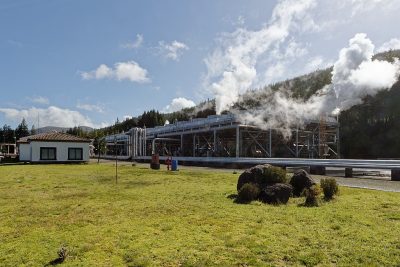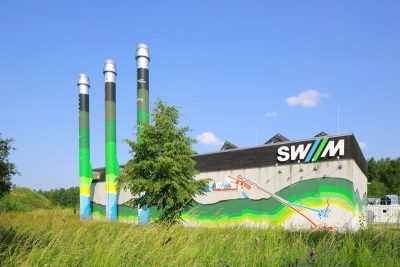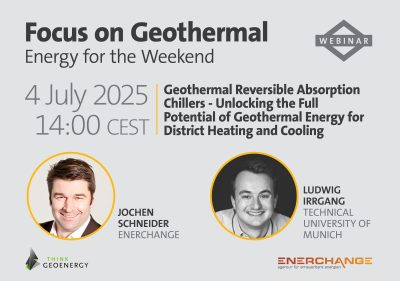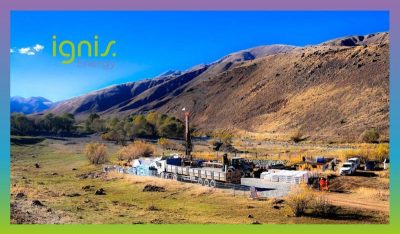How geothermal energy impacts air pollution and emissions in Italy
The increase in geothermal power generation over the past10-15 years in Europe has measurably allowed to prevent emissions and air pollution in Europe and Italy, so a study by the European Environment Agency.
In an article shared last week on Greenreport.it, the authors look into how geothermal energy helps cut pollution and CO2 emissions in Italy and Europe, according to the European Environment Agency.
Due to the ongoing climate crisis, Italy has just gone through the hottest decade of its history – which reached its peak in Europe in 2019 -, and started 2020 with critical parameters regarding air pollution in many regions (including Tuscany , especially in the Florentine and Lucchese plain). To improve our health and that of the planet, it is therefore urgent to make new progress on the energy transition front: increasing the use of renewable sources such as geothermal energy is a fundamental step to take, as shown by the data collected by the European Environment Agency (EEA) in his latest report Renewable energy in Europe, to which contributed among others the expert on energy policies Filippo Antonio Capizzi.
As the EEA poinsts to, the European Agency has the task of providing reliable and independent information on the environment, today in the EU about 20% of all energy used for heating comes from renewable sources, like 8% of that used for transport and 30% of electricity, with undoubted advantages as regards the fight against the climate crisis: «In the last two decades, the consumption of renewable energy has increased rapidly throughout Europe in response to dedicated policies and measures, and to cost reduction. If the EU’s share of renewable energy had not grown since 2005 it would have been necessary to burn a significant amount of fossil fuels to meet our energy needs. In this case, in 2018 EU greenhouse gas emissions would have been 11% higher.
As regards the fight against air pollution, the use of some renewable sources also has non-positive effects: «Since 2005 – argues the EEA – the growing replacement of polluting fossil fuels with renewable energy throughout the EU has led to a 7% reduction in total sulphur dioxide (SO2) emissions and a 1% reduction in nitrogen oxide (NOx) emissions in 2017. In contrast, particulate matter (PM) released into the atmosphere and emissions of volatile organic compounds (VOC) have increased due to the growth of biomass combustion since 2005. PM2.5 has increased by 11%, PM10 by 7% and VOCs by 4%”.
In this context, what is the role played by geothermal energy? To respond, the EEA has analyzed the impact of this renewable source both on the electricity production and on the heat side.
As a result, the increase in the use of geothermal energy for the production of electricity, achieved since 2005, prevented the emission of 1 Mt of CO2 and the consumption of 270 ktoe of fossil fuels in 2018; at the same time, the increase in heat production avoided the emission of 1 other Mt of CO2 and the consumption of another 346 ktoe of fossil fuels.
Data that show clear benefits in the fight against climate change, and that find positive consequences also in the fight against air pollution. In fact, EEA documents that the increase in geothermal electricity has allowed (in 2017) to cut NOx emissions by 0.3 kt and SO2 emissions by 0.1 kt, without increasing those of PM10, PM2.5 and VOC; a role that must be added to that offered by the production of geothermal heat, which has been very important since the air conditioning of buildings using traditional fuels represents one of the main causes of air pollution. In fact, the increase in geothermal heat production cut NOx emissions by 0.6 kt, PM10 emissions by 0.2 kt, PM2.5 emissions by 0.2 kt and 0.6 kt SO2 emissions and 0.1 kt VOC emissions.
From geothermal energy therefore come clear benefits against the climate crisis and atmospheric pollution, which alone has caused over 400 thousand premature deaths in the EU in 2016 alone. Also in Italy, where air pollution causes at least 76,200 victims per year (14,600 from NO2, 3.000 from O3, 58.600 from PM2.5) and where climate change has affected the territory with 157 extreme climatic events in the last year, the use of geothermal energy has guaranteed important advantages.
In fact, as the European Environment Agency shows, by 2018 the increase in geothermal electricity production – currently present exclusively in Tuscany – has allowed Italy to avoid the use of 164.09 ktoe of fossil fuels, in addition to the emission in an atmosphere of 0.51 Mton of CO2 and numerous pollutants: 0.15 kt of NOx, 0.01 kt of PM10, 0.05 kt of SO2 and 0.04 kt of VOC. On the contrary, a decrease in the use of geothermal energy is connected to an increase in climate-changing gases and pollutants released into the atmosphere: throughout Italy the use of this renewable source in the “heating and cooling” sector – concentrated in Tuscany but also in Veneto, Campania, Puglia, Lazio and other regions – compared to 2005, it decreased in the energy mix (although in absolute terms the use of geothermal energy for heating purposes increased), and this is reflected in 2018 in a greater use of fossil fuels (+70.34 ktoe) as well than in higher CO2 emissions (+0.18 Mton) and pollutants such as NOx (+0.09 kt) and VOC (+0.01 kt).
“Technologies that do not burn renewable fuels (such as wind, photovoltaic, geothermal, heat pumps, solar thermal, etc.) – confirm the EEA in this regard – have the greatest reducing impact on the emission of atmospheric pollutants”.
Source: Greenreport.it

















